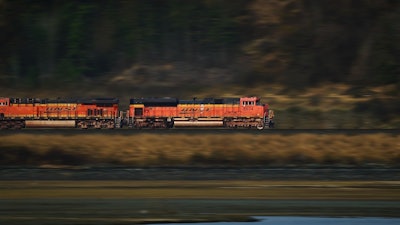
BNSF Railway, the largest grain-hauling railroad in the United States, will reduce corn rail tariff rates for most domestic shipments beginning in October, while keeping Pacific Northwest export terminal rates unchanged, according to the latest Grain Transportation Report released by USDA’s Agricultural Marketing Service.
The rate changes will significantly impact corn flows between the western Corn Belt and two major destinations: Pacific Northwest export terminals and cattle feedlots near Hereford, Texas. Shuttles originating from St. Joseph, Missouri will see the largest rate drop of $600 per car (approximately $0.15 per bushel).
Most elevators in Illinois, Iowa and Nebraska will favor shipments to Hereford, while those in Minnesota, North Dakota and South Dakota will favor the Pacific Northwest. Nine elevators in southwest Minnesota and southeast South Dakota will have minimal spreads in either direction, making them most likely to switch destinations based on corn price fluctuations.
The report notes that corn represents the largest share of grain rail carloads, accounting for 58 percent of all bulk grain carloads originated by U.S. railroads in 2023. BNSF moves most corn via shuttle trains — dedicated units of 110-120 covered hopper railcars that operate on yearlong contracts.
Looking ahead, early indicators suggest ample corn supplies in BNSF-served areas. USDA projects a record U.S. corn harvest of 15.7 billion bushels in marketing year 2025/26. North and South Dakota, both served by BNSF, reported significant increases in planted corn acreage compared to their prior three-year averages.
The Grain Transportation Report is published weekly by USDA’s Agricultural Marketing Service and provides data on various transportation modes used to move agricultural products.














